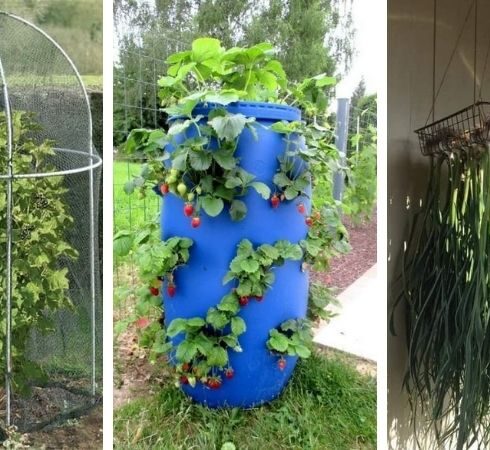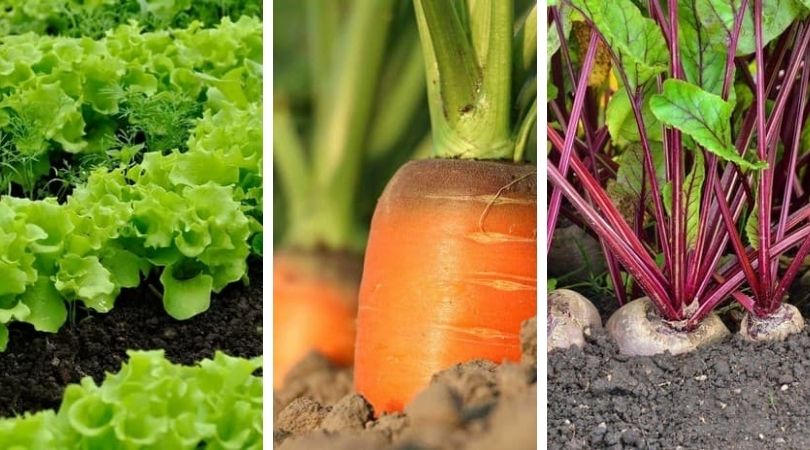
Autumn is the time for harvesting and preparing for the new season. The volume of spring troubles will depend on how the garden will go into winter. It is for this reason that experienced gardeners never miss the opportunity to carry out as much work as possible in the fall. Prepare the beds, fertilize. And also - to plant some of the crops. What can be planted before winter? And onions, and green, and root crops. There are many advantages to this approach: seedlings appear earlier, grow stronger, some crops manage to yield before the activation of their main pests, the yield is obtained two weeks earlier, there is the possibility of re-planting. In this material, we will consider the features of podwinter sowing, as well as recommendations for a number of major crops.
General rules for winter crops
For winter crops, it is not necessary to allocate a large plot of land. If the products are not for sale, but for your table, a garden with a total area of 5-6 sq. m. will fully provide a family of 4-5 people and vitamin greens, and early root crops.
It is better to choose a place for winter crops that is accessible, sunny, without a slope. Since the time to sow will come later (with the establishment of small frosts in the last decade of October, and in the south - November), it is better to prepare the land in advance. Back in August, fertilizer should be applied, the soil should be dug, leveled, and before frost (while the top layer is still not frozen), grooves should be made.
There is also a rule for seeding rates. Since the risk of loss (loss) of some of the seeds is inevitable, the rate should be increased by 25-50%. Sowing seed must be dry: after sowing, do not water under any circumstances.
Some gardeners do not practice podzimny, but winter sowing. This is also possible in January, February. This method is justified where unstable autumn temperatures can provoke early germination of seeds. However, in this case, it is necessary to have a supply of earth in order to sprinkle the frozen grooves. In the southern regions, this method is replaced by crops in January or February "windows", when the soil thaws, but does not have time to warm up enough to give the seeds growth.
After sowing, in order to better adhere the seed surface to the soil, it is recommended to compact the soil above the furrows. And for insulation - to grind. In winter you need to try to sketch on the ridges of snow. Early in the spring, cover them with a film stretched over arcs - this will allow the earth to warm up earlier, somewhat accelerate the germination and growth of sown crops, and protect the seedlings in the event of recurrent frosts.
1. Dill

Dill seeds sprout already at +3 ° C, so they can be sown only when the temperature is steady. During the day it can be 0 ... + 2 ° С, at night -2 ... -3 ° С.
The seeding depth is 2.5-3 cm. The distance between the rows is 20 cm. The seeding rate per square meter is 3-5 g. You can also apply fan sowing on the surface, mixing the seeds with sand, and be sure to mulch on top. Sorts: "Fireworks", "Hercules", "Udalts", "Earlier miracle", "Tenderness", "Preobrazhensky", "Redoubt", "Gribovsky", "Grenadier", "Aurora". "Drummer", "Esta", etc. Dill sown before winter will be ready to eat in mid-May.
2. Parsley
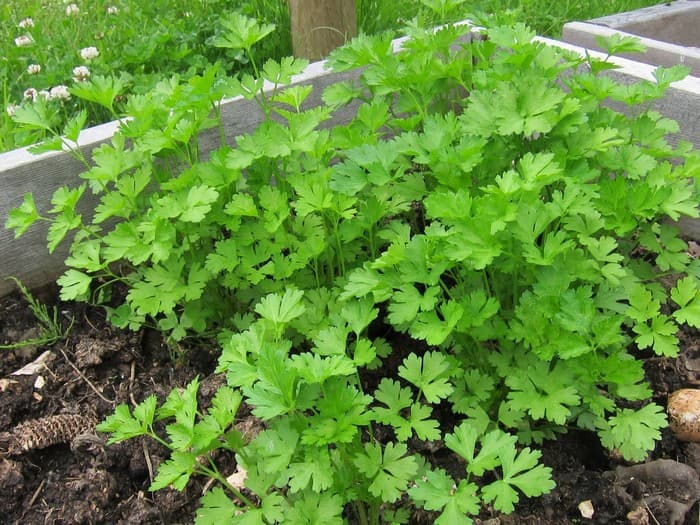
Leaf parsley emerges even at + 2 ° C heat. Its seedlings are free to tolerate temperatures down to -9 ° C. But the seeds do not germinate well, so sowing in winter is more beneficial for her, especially in the southern regions. It allows the parsley to buy time and start a more friendly growing season.
The sowing depth of seeds is 1-1.5 cm. The distance between the rows is 20-25 cm. The seeding rate per square meter is 0.6-1.5 g. Of the varieties it is better to take those with large leaves - "Kucheryavets", " Bordovician "," Italian giant "," Breeze "," Curly "," Ordinary sheet "," Green crystal "," Universal "," Astra "," Alba "," Esmeralda "," Pagoda "and many others.Sowing of parsley in the winter allows you to collect the first leaves at the end of May. You can also pay attention to the root varieties: "Sugar", "Russian size", "Eagle".
3. Cilantro (coriander)
Good for crops in late autumn and cilantro. Its seedlings are not afraid of recurrent spring frosts and freely survive cold snaps down to -8 ... -10 ° С.
The sowing depth of seeds is 1-1.5 cm. The distance between rows is 25-30 cm. The seeding rate per square meter is 5 g. Varieties: "Shiko", "Yantar", "Debut", "Alekseevsky 247", "Taiga", "Stimul", "Borodinsky" and others.
4. Salad

It is advantageous to sow lettuce before winter - an early harvest is obtained regardless of whether the spring is rainy or dry. The seeds of this culture tolerate low temperatures well, therefore, sowing is carried out with a stable cold snap, when the thermometer readings drop to -2 ... + 2 ° С.
The seeding depth is 2 cm. The distance between the rows is 30-40 cm. The seeding rate per square meter is 0.6-0.7 g. Varieties: "Large head", "Sonata", "Moscow greenhouse", "Vitamin", Gourmet, Berlin Yellow, Rhapsody, Dubachok, Festivalny and many others. The salad sown in the fall is ready for the table already for the May holidays.
5. Watercress
Watercress emerges in just a couple of days and immediately begins to grow rapidly. Therefore, it is impossible to rush to sow this crop for the winter - you need to wait for the frost.
The seeding depth is 1-1.5 cm. The distance between the rows is 10-15 cm, with line sowing the distance is 20 cm between the lines, 50 cm between the belts. Seeding rate per square meter - 3 g. Varieties: "Broad-leaved", "Narrow-leaved", "Curly cress".
6. Salad mustard (leaf)
Mustard leaf or salad is not afraid of frosts, easily tolerates cold snaps to -5 ° C, it must be sown with the onset of the first stable frosts.
The seeding depth is 1.5 cm. The distance between the rows is 25-30 cm. The seeding rate per square meter is 2-2.5 g. Varieties: "Red-leaved", "Green-leaved".
7. Spinach
Sowing spinach in the winter has two dates. The first is in the last days of September. Plants manage to form a rosette of small leaves, which will hibernate under a snowy shelter. With the arrival of spring heat, they will immediately start growing and after a week and a half from the garden it will be possible to pluck the first vitamin leaves.
The second term is in November-December (depending on the climatic zone), with the onset of stable frosts. In this case, the seeds will hatch already in the spring, which is also not bad, since the culture will give an early harvest.
Sowing depth of seeds 3-4 cm. Distance between plants - 7-10 cm. Between rows - 15-20 cm. Seeding rate per square meter - 4 g. Varieties: "Juliana", "Victoria", "Matador", "Universal "," Progress "," Shirokolistny "," Garant "and many others.
8. Carrots
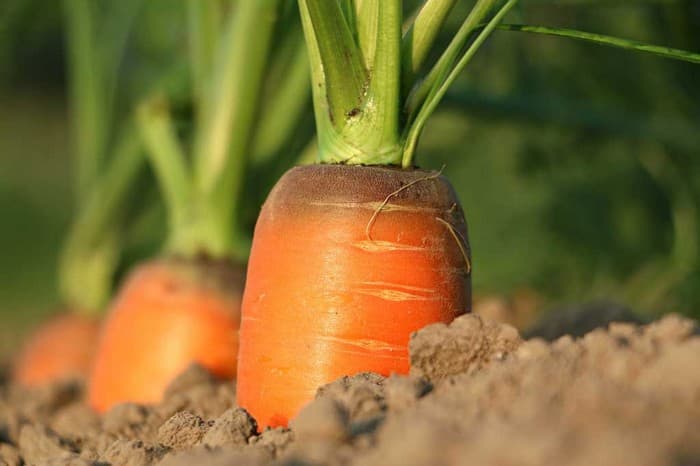
To sow carrots, the earth needs to settle, therefore, the garden must be prepared in advance. Sowing dates begin when the thermometer readings in the region of + 2 ... + 4 ° С.
The seeding depth is 3-4 cm. The distance between the rows is 15-20 cm. The seeding rate per square meter is 1 g. Varieties: "Supernant", "Alenka", "Karotel", "Incomparable", "Moscow winter A 515" , "Fun", "Early TSKHA", "Artek", "Canned", "Amstardamskaya", "Vitaminnaya 6", "Nantes-4", "Shantane 14" and many others.
Selective harvesting of root crops will begin from the beginning of June, but you need to remember: carrots sown in autumn are stored worse than during spring planting, so it is better to think over the required volume of production in advance.
9. Beets

It is impossible to rush to sow beets, its seeds are capable of germinating already at + 5 ° С, therefore, the timing of winter sowing should be shifted to a period of stable cooling, - 2 ... - 4 ° С.
The sowing depth of seeds is 3-4 cm. The distance between plants is 5-10 cm. Between rows is 20-30 cm. The seeding rate per square meter is about 4 g. Varieties for sowing before winter must be taken exclusively cold-resistant or marked “resistant to shooting ":" Egyptian flat "," Winter flat "," Darnya "," Winter A 474 "," Thekla "," Cold-resistant 19 "," Bordeaux 237 "," Winter incomparable "," Detroit "," Red ball "and dr.
The first collection of root crops from podwinter sowings of beets can be carried out in late May or early June. But such beets are stored worse than during spring planting, so it is better, as in the case of carrots, to think over the required volume of production in advance.
10. Turnip
Turnips are sown before the onset of stable frosts, about two weeks. In spring, sowing under winter allows it to form before the cruciferous flea begins its attack.
Sowing depth 3 cm. Distance in a row - 10-15 cm, three seeds per nest. Row spacing - 25-30 cm. Seeding rate per square meter - 2 g. Varieties: "Geisha", "Petrovskaya 1", "White Night". Turnip sown before winter will allow to start harvesting in late May or early June.
11. Celery
More often, winter sowing of celery is applied to leafy varieties, and any of them is suitable. But even among the root there is a variety ("Kornevoy Gribovskiy"), suitable for sowing in the fall.
The seeding depth is 1.5-2 cm. The sowing is done in a thickened manner. Seeding rate of seeds per square meter - 0.1-0.2 g. Varieties: "Root Gribovsky", "Apple" and others.
12. Horseradish
Growing horseradish from seeds is a rarity. Basically, this culture reproduces vegetatively. But, if by seeds, then winter sowing is an excellent choice!
Seeding depth 2-3 cm. Distance between plants - 30-35 cm. Between rows - 50-70 cm. Varieties: "Valkovsky", "Rostovsky", "Atlant", "Suzdolsky", "Latvian".
13. Leeks
They are in no hurry to sow leeks. Its seedlings are afraid of frost, so the seeds are sown not earlier than when the thermometer starts to show below 0 ° C. The method is used mainly in the south.
The seeding depth is 1.5 cm. The distance between the plants is 8-12 cm. Between the rows is 30-35 cm. The seeding rate is 2 g. Varieties: "Karantansky", "Columbus", "Vesta", "Winner" and others ...
14. Onion sets and nigella
Onions are one of the crops recommended for winter planting, especially in cold climates. This method gives an earlier harvest and makes it higher, since, having an early germination, the crop is less affected by diseases and pests. Planting onion sets - two weeks before stable frosts, black onions - on frozen ground.
Wild oat and the first fraction (bulb size 1.5 cm in diameter) - the best choice for winter sowing, are planted according to the scheme 3 x 15 cm.Sevok (1.5-3 cm in diameter), 3 onions per nest, or compacted ... Bulbs over 3 cm in diameter are seated according to the scheme 8-10 by 15-20 cm.
The planting depth of onion sets is 3.5-4 cm, onion-nigella - 2.5 cm. It is better to take winter onion varieties: "Danilovsky 301", "Odintsovets", "Radar", "Carmen MS", "Stuttgarten Riesen" , "Shakespeare", "Myagkovsky 300", "Ellan", "Buran", "Muzona" and many others. Onions for feathers can be harvested at the end of May, turnips - by the middle of the summer season.
15. Onion-batun
The onion can be sown in three terms per season, but sowing before winter is considered the easiest.
Seeding depth 2-2.5 cm. Distance between plants - 20-25 cm. Between rows - 40-50 cm. Seeding rate - 6-8 g. Varieties: "April 12", "Gribovsky 21", "Salad 35 "," Maisky "and others.
16. Multi-tiered bow
A multi-tiered onion is not afraid of frosts down to -40 ° C, it is so tolerant of cold. But for this to go into winter, he must already have a root system. Therefore, a multi-tiered onion is planted two weeks before frost.
The thickness of the bulbs is 1.5-2 cm. The depth of their embedding is 3-4 cm. Planting in 2-3 lines. Distance in a row 15-20 cm. Between rows 30 cm. Seeding rate per square meter - 0.3-0.5 kg. Varieties: "Odessa Winter 12", "Likova", "Memory", "Gribovsky 38", "Chelyabinsk Super Early", etc.
17. Garlic
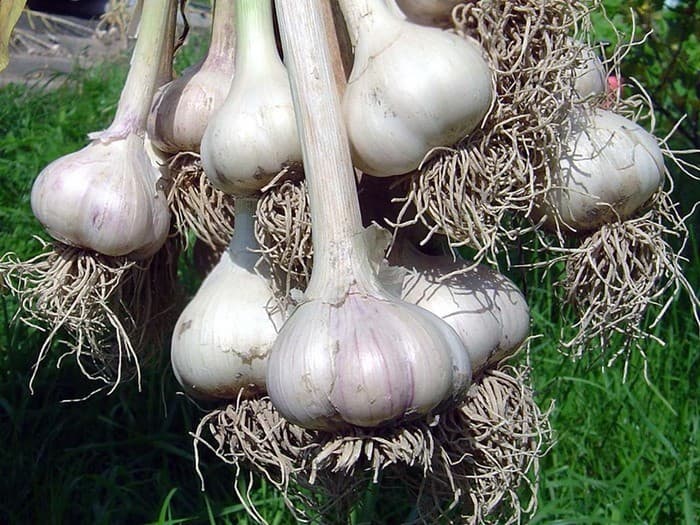
Winter garlic is planted in two ways. The deep planting method is mainly used in cold climates. It is carried out in mid-August and implies the deepening of the cloves by 10-15 cm.The usual method (traditional) is planted two weeks before a steady cold snap, which implies the closure of the cloves by 3-5 cm.Its timing is the last week of September, if it is the middle strip, early November - in the south.
The distance between the teeth is 10-15 cm.The distance between the rows is 20-25 cm. Winter varieties: Komsomol, Alkor, Messidor, Polessky souvenir, Spas, Petrovsky, Lyubasha, German and many others.
18. Radish
Radish seeds germinate well even at fairly low temperatures, for this reason, it is impossible to rush to sow them, delaying the moment of planting at the end of November.
Seeding depth 2-3 cm. Distance between plants - 4-6 cm. Between rows - 10-15 cm. Seeding rate per square meter - from 5-6 to 10 g. Varieties: "Lighthouse", "Resistant", " Carmen "," Spartak "," Yubileiny "," Pink-red with a white tip "," Heat "," Zarya "," Hussar "," Greenhouse "," Early crunch ", etc. Radish sown with winter sowing is ready to eat already at the beginning of May.
19. Parsnip
Parsnip is a preferable crop for winter sowing due to the short shelf life of seeds and rather poor germination. Podwinter crops allow stratification of its seed material and increase germination.
Seeding depth 2 cm. Distance in a row - 5 cm. Between rows - 30-35 cm. Seeding rate per square meter - 1.5-2 g. Varieties: "Round early", "Best of all", "Student" ...
20. Fennel
Fennel, sown before winter, gives friendly spring shoots. However, this culture is thermophilic, therefore, since autumn, it is more often sown in the south.
The seeding depth is 2 cm. The sowing is thickened. Between the rows - 60-70 cm. With two-line sowing, 20-25 cm is left between the lines. The seeding rate per square meter is 0.8-1 g. Varieties: "Udalets", "Leader", "Aroma", "autumn handsome" and etc.
21. Sorrel
Sorrel is one of the most recommended plants for winter sowing. Sown in autumn, it rises earlier and gives off greens earlier. And almost all of its varieties are suitable for such a planting.
The depth of the embedment is 1-1.5 cm. The distance between the rows is 15-20 cm. The seeding rate per square meter is 1.5 g. Varieties: "Victoria", "Belleville", "Spinach", "Krupnochereshkovy" and many others.
22. Potatoes
Planting potatoes in winter is not traditional, but it does take place, since at a depth of 10-15 cm tubers can perfectly tolerate a drop in temperature even to -10 ° C. With this technique, tubers are selected weighing 100-150 g. They are planted without vernalization. Planting time is the first night frosts, when the ground is still thawing during the day.
Planting method - double beds, to be installed in the spring over the rows of the arc. The width of the beds is 70 cm, the distance between the beds is 80 cm, between the rows in the garden is 45 cm, between the tubers is 25-30 cm. The depth of planting of tubers is 15-20 cm. Planting is staggered. Sorts: "Zdabytok", "Nevsky", "Luck", "Lorkh", "Asteriks".
23. Cabbage
Podwinter sowing of cabbage is not often practiced, mainly in regions with a relatively warm climate. But even for the south, there is a risk in this method - rapidly emerging seedlings can freeze out at unstable spring temperatures. However, there are recommended varieties for sub-winter planting.
In addition to these crops, before winter, you can sow asparagus, arugula, rutabagas, cucumber grass, Swiss chard, rhubarb.
All images obtained via Google Images and Pinterest (unless otherwise noted).

